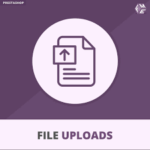In today’s fast-paced world, online prescription refill options through apps have become incredibly convenient. No more waiting in long pharmacy lines or dealing with tricky phone calls—it’s all available at your fingertips. But like any system, there are limits and guidelines to ensure medications are dispensed safely and responsibly. In this article, we’ll walk you through what you need to know about refilling prescriptions through apps, the restrictions that may apply, and how you can manage your medications efficiently.
How Do Prescription Refill Apps Work?
Most medication refill apps allow users to request a prescription refill directly from their phone or computer. Once you log in, you can view your available medications, check refill eligibility, and send a request to your pharmacy or doctor. Some apps even notify you when it’s time to reorder, ensuring you never run out of your essential meds. Apps streamline communication between patients, healthcare providers, and pharmacies. But the process isn’t always as simple as clicking a button. Limits are often in place to ensure prescriptions are filled safely and legally.
What Kinds of Medications Are Eligible for Refills?
Routine medications like blood pressure pills, cholesterol drugs, or birth control are often easy to refill through apps. However, certain types of medications come with stricter rules. Controlled substances, such as painkillers or ADHD medications, typically require more oversight and may not be eligible for automatic refills. Depending on your location and healthcare provider, you may also face restrictions on medications like antibiotics or steroids. These drugs are prescribed for specific, short-term use, making it unlikely you’ll be able to refill them without a new prescription.
Are There Limits on the Number of Refills Allowed?
Yes, even with prescription apps, there are limits on how many times you can refill a medication. Doctors usually set refill limits based on your treatment plan—common prescriptions might allow for up to six refills over a year. Once you’ve reached the refill limit, the app will require a new prescription authorization from your doctor. State laws and pharmacy policies also play a role. For example, some medications may be restricted to 30-day supplies with no option for early refills, especially for controlled substances.
Can You Refill Controlled Substances Through Apps?
Refilling controlled substances like opioids or anxiety medications through apps is generally restricted. In most cases, a doctor needs to reassess your condition before issuing a new prescription. Some apps allow you to request a refill, but it won’t go through until the healthcare provider manually approves it. Many states require face-to-face consultations for refilling controlled substances, though telehealth appointments may sometimes be allowed. Be prepared for stricter oversight when managing these medications through digital platforms.
What Happens If a Refill Request Is Denied?
It can be frustrating when a refill request is denied, especially if you’re running low on your meds. Rejections usually happen when the prescription has expired, you’ve reached the maximum refill limit, or the medication requires further authorization. If your refill gets denied, don’t panic. Most apps notify you immediately and provide the next steps—such as contacting your doctor or scheduling an appointment to renew the prescription. It’s a good idea to set reminders in the app to track when your refills are running out to avoid last-minute surprises.
Are There Limits on Early Refills?
Many people wonder if they can get their medication refilled early, especially when going on vacation or dealing with changing schedules. While apps make managing prescriptions easier, pharmacies generally enforce policies to prevent early refills. Insurance companies also play a role here—they might refuse to cover early refills unless there’s a documented reason, like travel plans. In these cases, some apps allow you to submit a special request, though approval isn’t guaranteed.
How Does Insurance Affect Refill Limits?
Insurance companies often impose their own limits on refills to control costs and prevent misuse. They typically limit how soon you can refill a prescription—often 25 to 30 days after the previous fill. If you try to refill too early, the app may alert you that your insurance won’t cover the cost until a later date. However, certain plans offer exceptions for chronic conditions or long-term travel. It’s helpful to contact your insurance provider or check your app’s resources for any flexibility your plan offers.
What If You Need an Emergency Refill?
Running out of medication unexpectedly can be stressful, but some apps and pharmacies have systems in place for emergency refills. If your medication is critical, like insulin or heart medication, the app may connect you with a pharmacist who can provide a short-term emergency supply. In urgent cases, some pharmacies offer limited refills without a doctor’s approval, especially if it’s a life-sustaining medication. It’s always a good idea to reach out to your pharmacy if you find yourself in a bind.
Final Thoughts
While apps have made prescription refills more accessible and convenient, it’s important to stay aware of the limits that apply. Medications like controlled substances come with stricter rules, and insurance policies often dictate when and how often you can refill prescriptions. Staying organized, setting reminders, and communicating with your healthcare provider can help you avoid issues with your medications. Prescription refill apps are powerful tools for managing your health, but understanding their boundaries ensures that you get the most out of them. With a bit of planning and awareness, you can make these apps work smoothly for your medication needs.



